It previously was on the market for a total of 412 days.
412 days on Market
Pricing History
Certain content is available only to members.
There's no obligation.
Previous Photos & Floor Plan
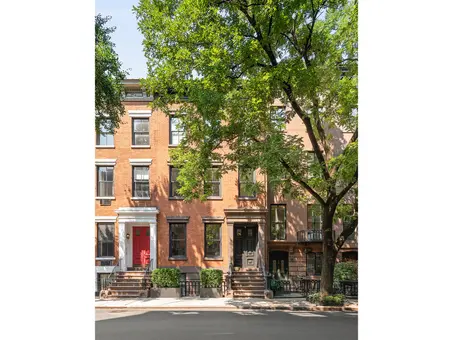
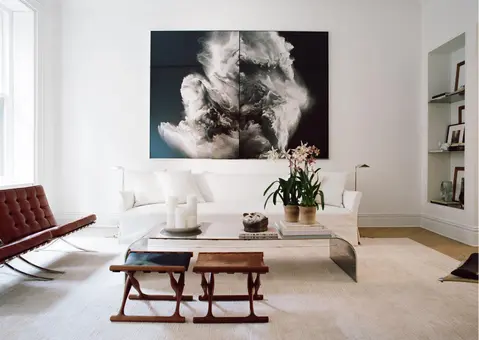
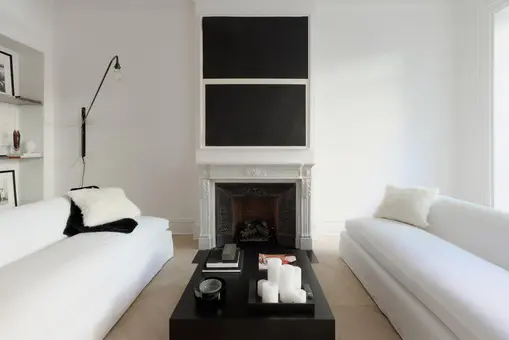
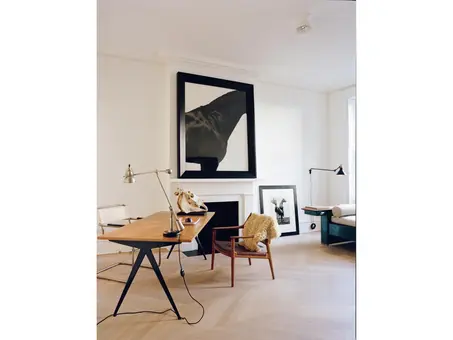
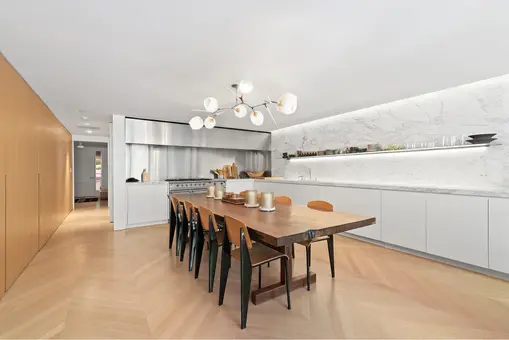
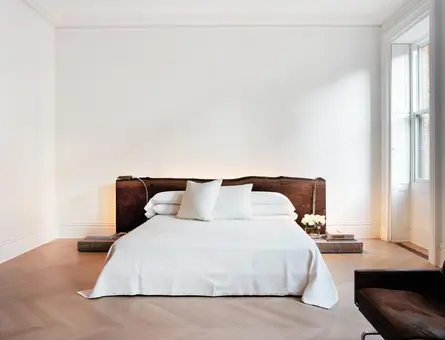
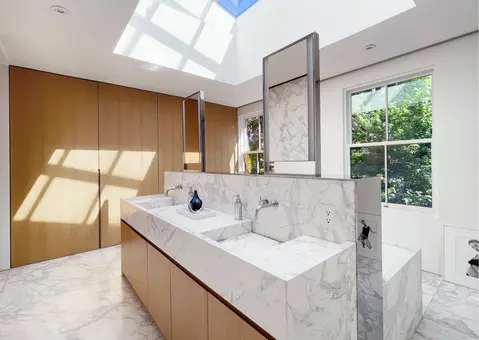
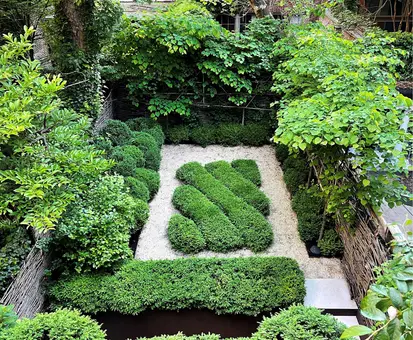
Townhouse Facts
-
Minimum Down: 20%Listed: Jun 22, 2022Last Price Change: ($17M) on Aug 9Days on Market: 412Building Type: TownhouseNeighborhood: Greenwich Village (Manhattan)Listing viewed 469 times
Est. Monthly Mortgage:
-
Mortgage calculator
Total Est. Monthly Carrying Cost:
$9,561
($2.05/ft2)
Note: the above is based on a down payment of 20% ($360,000),
which is the minimum amount permitted by the building.
Description
Within what is already one of the most desirable neighborhoods in the world, Ninth Street between Fifth and Sixth Avenues is particularly special. The architecture is as harmonious as it was in 1969, when the city’s Landmarks Preservation Commission included it in the Greenwich Village Historic District. That explains why some of the most discerning people in New York have gravitated to this single-block enclave.
On the northern side of the street, a bit west of center, stands 55 West Ninth Street, a handsome five-story townhouse built in 1840.
Its brick facade is trimmed with brownstone in ways that give the house a classical, but not ostentatious, demeanor. Every part of the exterior was extensively restored by architect Jean-Gabriel Neukomm less than a decade ago. According to Neukomm, on the street side of the house, only the cornice and the bricks are original -- and those bricks were carefully repointed.
The windows were replaced, and the surrounding brownstone elements were recreated by skilled craftsmen -- as was the entire stoop.
The modest yet authentically historic facade inspired the owners as they contemplated redoing its interiors. They went for a combination of classical and modern, knowing that by adding a rigorously detailed stairway, bespoke marble mantels, oak floors and new moldings, they could combine French luxury with streamlined New York efficiency. The living room fireplace is pure Louis XVI, which seemed to fit the house’s generous proportions (it’s 22 feet wide).
The moldings and the staircase are based on beaux-arts precedents, which they spent months researching. On the floors, boards of solid brushed oak are arranged in chevrons, a pattern associated with Haussmann-era Paris apartments.
Among the most surprising elements is the primary suite that occupies the entire top floor -- an elegant arrangement that makes the owners’ living quarters a terminus, rather than a place people pass by. The highlight of that suite may be the primary bathroom.
Neukomm took some inspiration from the plan of a bathroom by Paul Dupre-Lafon (1900-1971), the Parisian designer known for his extremely refined Art Deco furniture. But Dupre-Lafon was also an architect, who trained at l’Ecole des Beaux-Arts de Marseille and went on to design the homes of some of France’s wealthiest families. Still, even with Dupre-Lafon as a guide, laying out the primary bath required at least 30 iterations, Neukomm says.
In the end, the key was putting the island topped in Calacatta gold marble right below the skylight, which makes the room appear to glow.
Another highlight is the spectacular ground-floor kitchen. "You have one 30-foot-long wall of full-height storage, which means you can have an elegant clean surface on the other side," says Neukomm (referring to the expanse of Calacatta gold marble). The heart of the kitchen is Lacanche range, produced in Burgundy by a company that has made iron cooking equipment for more than 200 years.
Its newest ranges, clad in stainless steel and enamel, bring high-tech convenience to historical design. The same could be said of the handsome chrome Forbes and Lomax light switches and plates, and the black-crystal door knobs from E.R. Butler, based on the work of 19th century Boston designer and inventor Enoch Robinson.
Behind the handsome rear facade, landscape designer Miranda Brooks created a bi-level backyard. The area closest to the house became a dining terrace with Donald Judd-inspired table and chairs by the owner.
Further from the house, and raised to create a true feeling of separation, is a more natural space -- it recalls the garden of Paris’s Palais Royal. As in that garden, columns of boxwood arise from beds of white gravel. Surrounding the West Ninth Street backyard is fencing made of woven hazel branches and pleached Judas trees, which each spring display a riot of pink flowers.
Co-Exclusive with Compass
On the northern side of the street, a bit west of center, stands 55 West Ninth Street, a handsome five-story townhouse built in 1840.
Its brick facade is trimmed with brownstone in ways that give the house a classical, but not ostentatious, demeanor. Every part of the exterior was extensively restored by architect Jean-Gabriel Neukomm less than a decade ago. According to Neukomm, on the street side of the house, only the cornice and the bricks are original -- and those bricks were carefully repointed.
The windows were replaced, and the surrounding brownstone elements were recreated by skilled craftsmen -- as was the entire stoop.
The modest yet authentically historic facade inspired the owners as they contemplated redoing its interiors. They went for a combination of classical and modern, knowing that by adding a rigorously detailed stairway, bespoke marble mantels, oak floors and new moldings, they could combine French luxury with streamlined New York efficiency. The living room fireplace is pure Louis XVI, which seemed to fit the house’s generous proportions (it’s 22 feet wide).
The moldings and the staircase are based on beaux-arts precedents, which they spent months researching. On the floors, boards of solid brushed oak are arranged in chevrons, a pattern associated with Haussmann-era Paris apartments.
Among the most surprising elements is the primary suite that occupies the entire top floor -- an elegant arrangement that makes the owners’ living quarters a terminus, rather than a place people pass by. The highlight of that suite may be the primary bathroom.
Neukomm took some inspiration from the plan of a bathroom by Paul Dupre-Lafon (1900-1971), the Parisian designer known for his extremely refined Art Deco furniture. But Dupre-Lafon was also an architect, who trained at l’Ecole des Beaux-Arts de Marseille and went on to design the homes of some of France’s wealthiest families. Still, even with Dupre-Lafon as a guide, laying out the primary bath required at least 30 iterations, Neukomm says.
In the end, the key was putting the island topped in Calacatta gold marble right below the skylight, which makes the room appear to glow.
Another highlight is the spectacular ground-floor kitchen. "You have one 30-foot-long wall of full-height storage, which means you can have an elegant clean surface on the other side," says Neukomm (referring to the expanse of Calacatta gold marble). The heart of the kitchen is Lacanche range, produced in Burgundy by a company that has made iron cooking equipment for more than 200 years.
Its newest ranges, clad in stainless steel and enamel, bring high-tech convenience to historical design. The same could be said of the handsome chrome Forbes and Lomax light switches and plates, and the black-crystal door knobs from E.R. Butler, based on the work of 19th century Boston designer and inventor Enoch Robinson.
Behind the handsome rear facade, landscape designer Miranda Brooks created a bi-level backyard. The area closest to the house became a dining terrace with Donald Judd-inspired table and chairs by the owner.
Further from the house, and raised to create a true feeling of separation, is a more natural space -- it recalls the garden of Paris’s Palais Royal. As in that garden, columns of boxwood arise from beds of white gravel. Surrounding the West Ninth Street backyard is fencing made of woven hazel branches and pleached Judas trees, which each spring display a riot of pink flowers.
Co-Exclusive with Compass
All content above are visible to screen reader users, so you may ignore the show more button below.
Building Amenities
- Pre War
 6sqft delivers the latest on real estate, architecture, and design, straight from New York City.
6sqft delivers the latest on real estate, architecture, and design, straight from New York City.
